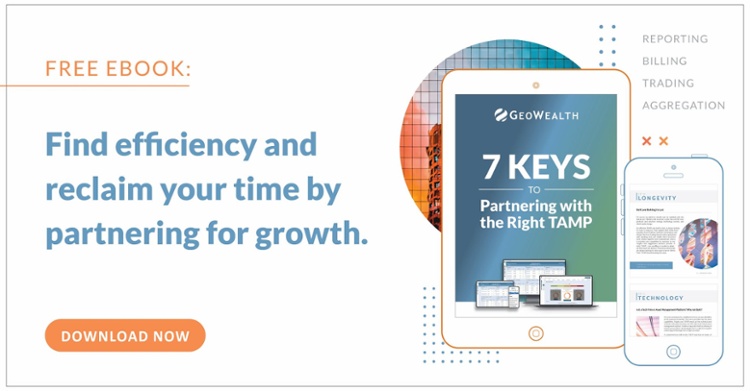Advisor Insights: Operational and Growth Trends and Challenges in the Independent RIA Space
Scale & Efficiency • Written by: Brendan Falls, CFP®

Keeping up with the industry
There’s no denying the rapid evolution of the financial services industry over the past few years. Growth-focused Registered Investment Advisors (RIAs) have had to adapt quickly to remain competitive. Whether it is the continued white-hot M&A activity, the uptick in client expectations, or challenges with staffing and remote work, advisors have been forced to stay nimble.
So how – and what – are they doing?
Here, we take a look at the most compelling recent trends in the hybrid and independent RIA space, as well as the common challenges RIAs are facing heading into the second half of 2023 and beyond.
RIA Channel Growth and AUM Trends
According to Cerulli data , growth in both the hybrid and independent RIA channels is significantly outperforming both wirehouses and independent broker-dealers (IBDs), as well as the industry as a whole.
When it comes to advisor headcount between 2011 and 2021, Cerulli reports 5.5% growth in the hybrid RIA channel and 3.3% growth in the independent RIA channel as compared to (1.6%) wirehouse growth, (3.0%) IBD growth and an industry average total of (0.1%).
Over that same time period, advisor-managed assets in RIA channels have also exceeded other channels and the industry average total of 9.6%, growing 13.6% among hybrid RIAs and 12.9% among independent RIAs.
But according to Marina Shtyrkov, associate director of wealth management at Cerulli, those statistics don’t tell the full story.
The total number of RIA firms is actually shrinking, having declined by 6% from 2020 to 2021 and 1% annually over the past five years. Shtyrkov points out that smaller RIA firms ($100 million AUM or less) are losing market share, with larger firms growing thanks in large part to the massive consolidation the RIA channel has experienced in recent years.
Advisor Growth Strategies reports that in 2011, there were only 10 RIA firms with at least $10 billion in AUM. As of March 30, 2023, there are 258 RIA firms with at least $10 billion in AUM. Those 258 RIA firms represent just 1.5% of all RIAs but those 258 RIA firms manage 47% of all assets in the RIA channel. Further, firms with $1 billion or more AUM have a market share of 74.6%.
Size Matters: The Impact of RIA Size on Operational Challenges and Practice Management Concerns
Regardless of practice AUM, Cerulli’s data indicates that compliance responsibilities and filings were a top challenge for more than 80% of firms.
Somewhat unsurprisingly, though, smaller firms ($25M in AUM or less) reported that significant operational responsibilities were also a top concern, along with practice management support and the future of RIA regulation and oversight.
John Furey, founder and managing partner of Advisor Growth Strategies, notes that larger RIAs have a revenue model and scale that allows them to invest in technology while also employing experts like estate or tax planners. This allows larger RIAs to cut down on some of those operational responsibilities that can overwhelm smaller practices and make it more difficult for them to compete with larger firms.
The largest firms surveyed expressed pressing concerns including the cost to maintain staff, rent and infrastructure, as well as selecting, maintaining and implementing technology.
Empowering Smaller RIAs to Drive Growth and Scale
Building scale in wealth management depends upon significant operational efficiency – and growth without scale isn’t sustainable from a profitability or resource perspective.
Furey suggests several viable options for smaller RIAs focused on growth to achieve scale within their firms, including partnering with another RIA, developing a niche client strategy, broadening firm ownership and focusing on developing human capital. RIAs facing operational challenges can also turn to outsourced partners in pursuit of the scale they need to compete.
Outsourcing burdensome middle- and back-office functions alleviates the operational burdens that can occur as RIAs add new clients and accounts, which would otherwise need to be addressed by adding costly resources.
Using trading as an example, we've determined that typical trade volumes are heavily weighted (70-80%) toward recurring maintenance trades (i.e. ongoing contributions and distributions), and far less (20-30%) toward new investments that require advisor attention.* By leveraging an outsourced trading partner for those recurring maintenance trades, RIAs can achieve greater cost efficiencies and scale as they add new clients and accounts.
Trading is just one example of how outsourcing can address the significant operational responsibilities of smaller RIAs, enabling the scale that leads to sustainable growth.
* Based on GeoWealth’s internal study of client trading volume from 2020 through 2022.

